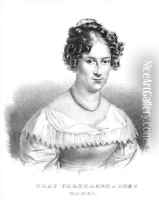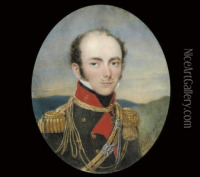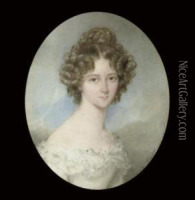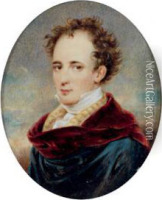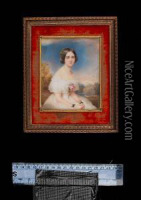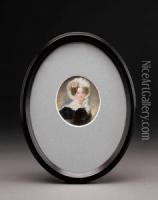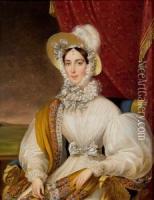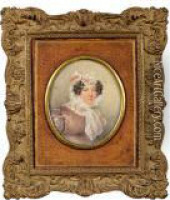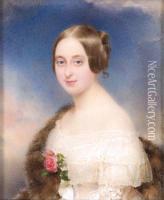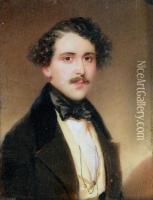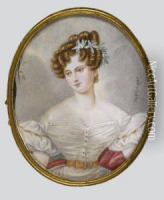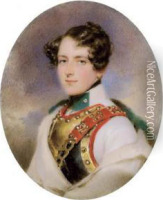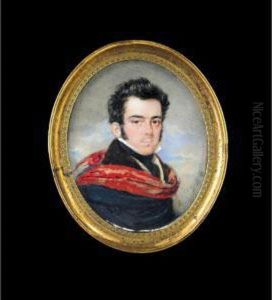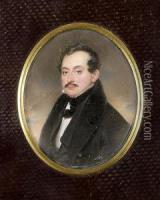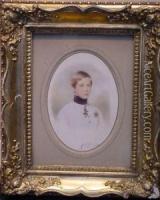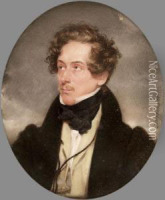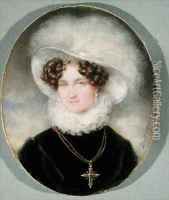Moritz Michael Daffinger Paintings
Moritz Michael Daffinger was an Austrian painter known for his miniature portraits. Born on January 25, 1790, in Vienna, he was a prominent figure in the Viennese art world of the early 19th century. Daffinger was trained by his father, Johann Daffinger, who was a porcelain painter. His talent was evident from an early age, and he further honed his skills under the tutelage of the renowned landscape painter Laurenz Janscha. He also studied at the Academy of Fine Arts Vienna, which was a significant institution for artistic training in Europe.
Daffinger initially began his career as a painter of porcelain at the Vienna Porcelain Factory, where his father worked. However, he soon transitioned to painting miniature portraits, a genre that was immensely popular during the time. His work was characterized by its fine detail, delicate brushwork, and the ability to capture the nuances of personality and character of his sitters. Daffinger's miniatures were often set in luxurious gold or enamel frames, making them highly sought after by the aristocracy and the wealthy bourgeoisie.
Throughout his career, Daffinger became the court painter to the Habsburgs, one of the most powerful royal families in Europe. His portraits of Emperor Francis I and other members of the imperial family solidified his reputation as one of the leading portraitists of his time. Aside from his miniatures, Daffinger also painted larger works, although these were less common.
Daffinger's style was influenced by the Biedermeier period, a term that describes the artistic, literary, and musical styles that were prevalent in the German-speaking countries during the first half of the 19th century. The Biedermeier period was marked by a focus on the domestic and the unpretentious, which is reflected in the intimate and personal nature of Daffinger's portraits.
Moritz Michael Daffinger passed away on August 21, 1849, in Vienna. His legacy lives on through his exquisite miniatures, which continue to be celebrated for their beauty and historical value. His works are held in many prestigious collections and museums, and they provide a window into the society and culture of Biedermeier-era Austria.
